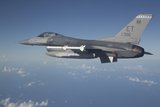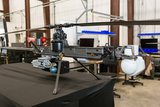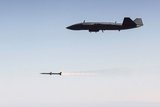Portugal wants F-35s, but has no firm plans in place
The Portuguese Air Force’s chief said moving to the F-35s was crucial. (Photo: Lockheed Martin)
The Portuguese Air Force (PoAF) has its eyes on the F-35 as the F-16 replacement, despite the lack of a clear procurement plan, according to the service’s chief.
Transitioning from the earlier generation Lockheed Martin fighter to the latest was an effort needed to maintain the PoAF’s capabilities in line with other European nations that are or will be operating the F-35, said PoAF chief of staff General Joao Cartaxo Alves.
Alves said that moving to the F-35s was crucial, adding that it was “something that is happening, but it is not done in one day”.
“This process has already begun,” he remarked. “We
Already have an account? Log in
Want to keep reading this article?
More from Air Warfare
-
![Anduril UK and GKN Aerospace collaborate on British Army ACP bid]()
Anduril UK and GKN Aerospace collaborate on British Army ACP bid
The pair will submit their demonstrator concept for Project Nyx, a development project for the British Army’s Land Autonomous Collaborative Platform.
-
![US Army command’s Picatinny CLIK common lethal drone interface makes progress]()
US Army command’s Picatinny CLIK common lethal drone interface makes progress
The Picatinny Common Lethality Integration Kit is designed to overcome the issue of unique integration methods between lethal payloads and drones as well as avoiding problematic acquisition conditions created by vendor lock.
-
![Australia invests extra A$1.4 billion in MQ-28A Ghost Bat after successful missile fire test]()
Australia invests extra A$1.4 billion in MQ-28A Ghost Bat after successful missile fire test
The investment includes new contracts for six MQ-28A Ghost Bat aircraft, as well as provisional funds to invest in the development of a Block 3 prototype.
-
![Northrop Grumman to fly new Project Talon CCA by late 2026]()
Northrop Grumman to fly new Project Talon CCA by late 2026
The newly unveiled collaborative combat aircraft looks to strike a balance between capability and cost-effectiveness, according to the company.
-
![MBDA and Lockheed move closer to F-35A Meteor flight tests]()
MBDA and Lockheed move closer to F-35A Meteor flight tests
Following the completion of successful ground tests, one more exercise remains before flight testing can begin.
























